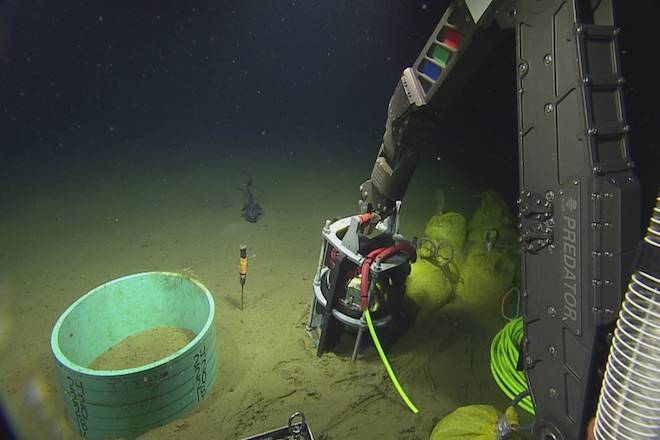An earthquake early-warning system tested off British Columbia’s coast could give residents anywhere from 20 seconds to two minutes to prepare before a quake.
The first-of-its kind warning sensors developed by Ocean Networks Canada is installed along the Cascadia subduction zone and when fully operating next March will be able to estimate location and magnitude of a megathrust earthquake.
RELATED: Great British Columbia ShakeOut earthquake drill reminder
Greig Bethel of Ocean Networks Canada, an initiative of the University of Victoria, says the system is active even as more sensors are being installed in the area to increase accuracy.
A simulated exercise was conducted Thursday in Vancouver on the 19-kilometre Canada Line stretch of the SkyTrain system, giving transit operators a chance to slow down trains and hold them at stations.
British Columbia is located on the Pacific Ring of Fire, an active seismic zone where thousands of mostly small earthquakes are recorded annually by sensors in the province.
Most of the quakes happen near the Cascadia subduction zone, an area where the Juan de Fuca and North American tectonic plates converge, stretching from Vancouver Island to northern California.
“Ocean Networks Canada’s earthquake early-warning technology promises a new era of earthquake preparedness that will enhance the safety of both riders and workers on the Canada Line,” says Canada Line general manager Ron Powell.
A news release from the network says to maximize warning time, it will focus on setting sensors as close to the Cascadia subduction zone as possible and on minimizing delays in data processing, communication, and delivery of warnings.
RELATED:Earth still moving in Old Fort, B.C., but not above homes: geologists
Global Positioning System receivers will also be located with the seismic sensors to further refine the magnitude.
Earthquakes release energy that travels through the Earth as seismic waves in two forms — secondary and primary waves.
The primary waves travel faster but the secondary waves are the cause of severe damage and ground shaking.
However, the sensors would detect primary waves to deliver alerts before the arrival of the secondary waves.
“The detection of an earthquake by many sensors can provide rapid estimates of the location and magnitude of an earthquake as it occurs,” the release says. “This information can be used to determine the estimated arrival time and intensity of ground shaking at specific locations across a region, allowing protective actions to take place before the shaking hits.”
The early-warning system can help reduce deaths, injuries and property losses, trigger trains to slow down, stop bridge and tunnel traffic, open bay doors at fire and ambulance halls, halt landings for incoming air traffic, and even allow surgeons to stop delicate procedures, the release says.
The Canadian Press



